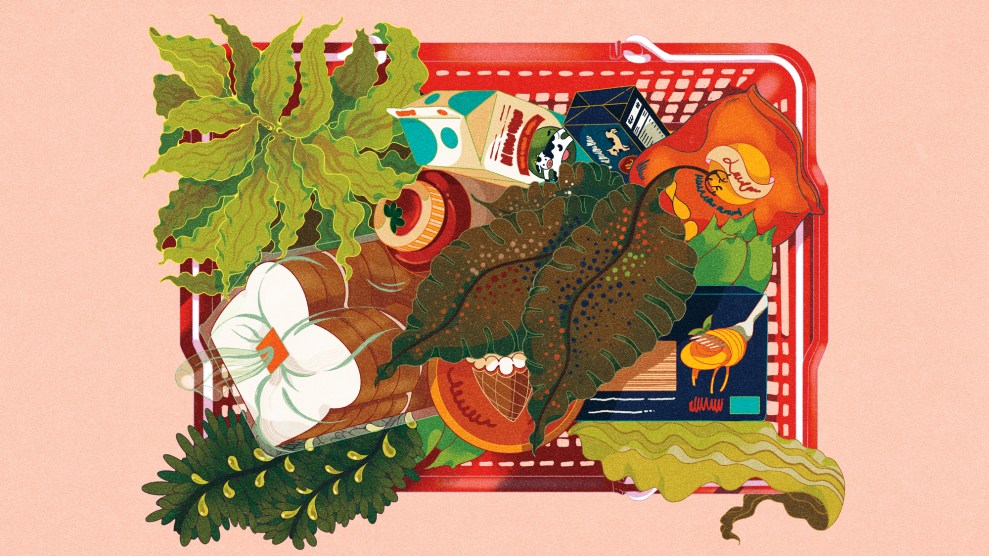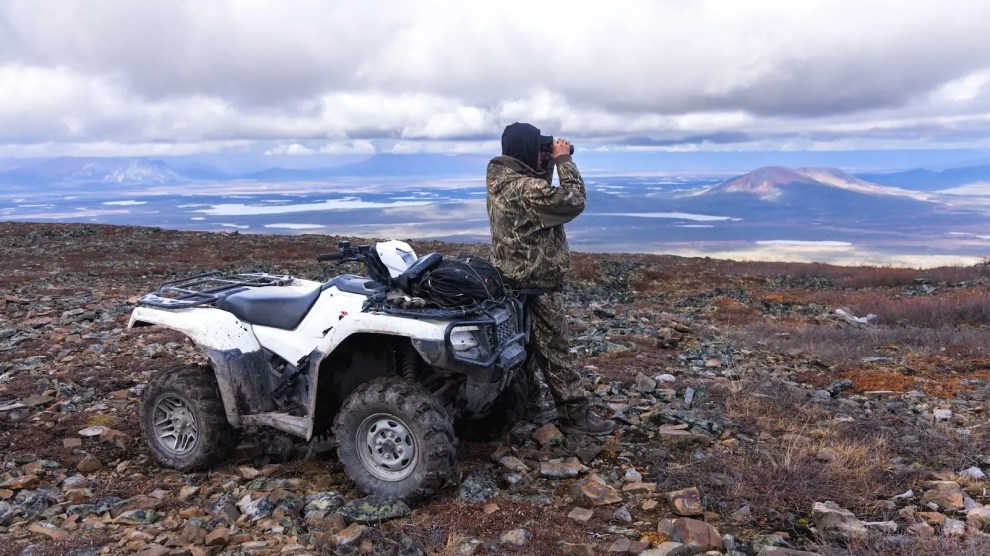
Islenia Mil
Seaweed is having a moment. Once relegated to sushi rolls, kelp and other “sea greens” are now appearing in an array of American foods and beverages, including pasta, chips, burgers, butter, bread, beer, salsa, tea, muffins, and even ice cream.
When I started looking into it, I too was eager to join the seaweed hype. After all, what’s not to like? Enthusiasts love seaweed for its subtle umami taste and plentiful vitamin and mineral content. It also brings to the table several environmental benefits: As they grow underwater, kelp forests can suck up nitrogen and phosphorus pollution in the ocean and absorb carbon dioxide; by doing so, they raise the pH of coastal waters and help reduce ocean acidification. And when introduced in small amounts as a feed additive for cattle, some seaweed may even dramatically cut down on the methane—a potent greenhouse gas—emitted by cattle through their burps and farts. “It’s good for the body and good for the planet,” says Vincent Doumeizel, a senior adviser on oceans at the United Nations and author of the new book The Seaweed Revolution. “And it’s delicious.” (His personal recommendation is French food writer Clotilde Dusoulier’s seaweed tartare.)
As demand has grown, seaweed farming across the world has flourished. In the last two decades, as the harvesting of wild seaweed has stayed flat, global seaweed cultivation has tripled to 38 million tons per year, largely led by Asia, where seaweed has been consumed for centuries. The United States grows a small fraction of that—currently more than 800 tons per year—but American seaweed farms are on the rise, particularly in Maine and Alaska, making it the country’s fastest-growing aquaculture sector. In the last three years, the National Oceanic and Atmospheric Administration alone has announced tens of millions of dollars in aquaculture grants, including for seaweed farming, with other funding available at about a dozen other agencies. Doumeizel, for one, sees a potential transition to ocean farming as akin to the Agricultural Revolution of 12,000 years ago. With the global population expected to hit 10 billion by 2050, he argues limiting ourselves to land-based food won’t work anymore. As he puts it, “We really need to move from prehistory to modern history in the ocean.”
But, many experts, Doumeizel included, warn that we may not want an exact repeat of history. Bren Smith, co-founder of the seaweed farming nonprofit GreenWave, worries that seaweed farming, if gobbled up by Wall Street, could result in many of the same problems associated with large-scale farming on land. “If [corporations] create 1,000-acre monoculture farms, we’re just re-creating the problems of the past,” he says. The farming of kelp, the most popular seaweed variety in the US, typically involves collecting seedlings, cultivating baby seaweed in a lab, and then securing the seaweed to ropes and buoys floating just below the ocean’s surface (rather than on the seafloor, as it grows in the wild). If those ropes and buoys are made of plastic, like they often are, microparticles could break off and pollute the ocean.
And it’s unclear whether human-made seaweed farms, whose crops are eventually harvested and eaten, can permanently pull a significant amount of CO2 out of the atmosphere, meaning our new obsession with eating seaweed may not come with that environmental perk. Some academics and entrepreneurs have proposed sinking seaweed to the deep ocean, where they believe it would remain for centuries, to help pull carbon from the atmosphere. But several of the experts with whom I spoke are skeptical. “There is hope that it will be a sink for carbon,” says Scott Spillias, a researcher affiliated with the University of Queensland in Australia whose work has focused on seaweed farming. “But I don’t think anybody has shown that definitively.”
Add to that the hurdles already posed by climate change: “It’s our biggest challenge right now,” says Tela Troge, a kelp farmer at Shinnecock Kelp Farmers, the first Indigenous-owned kelp farm on the East Coast. Many seaweeds, like the sugar kelp farmed by Troge and her colleagues in Shinnecock Bay on Long Island, rely on cold waters. As oceans have gotten warmer, Troge explains, it has become more difficult to find and harvest sugar kelp seeds, which are among their best-selling products. “We have to adapt as the climate and the waters around us adapt,” she says.
Caveats and all, there is reason to be optimistic. The best-case scenario, says Greenwave’s Smith, is that seaweed farmers will learn from their peers’ mistakes on land and scale up responsibly. In other words, a fresh farming frontier, even as it’s threatened by climate change, offers hope. “Out in the water, it’s kind of a blank slate,” he says. “We get to build something right from the start.” So, for now, go ahead and enjoy those kelp burgers—but maybe with a grain of salt.


















